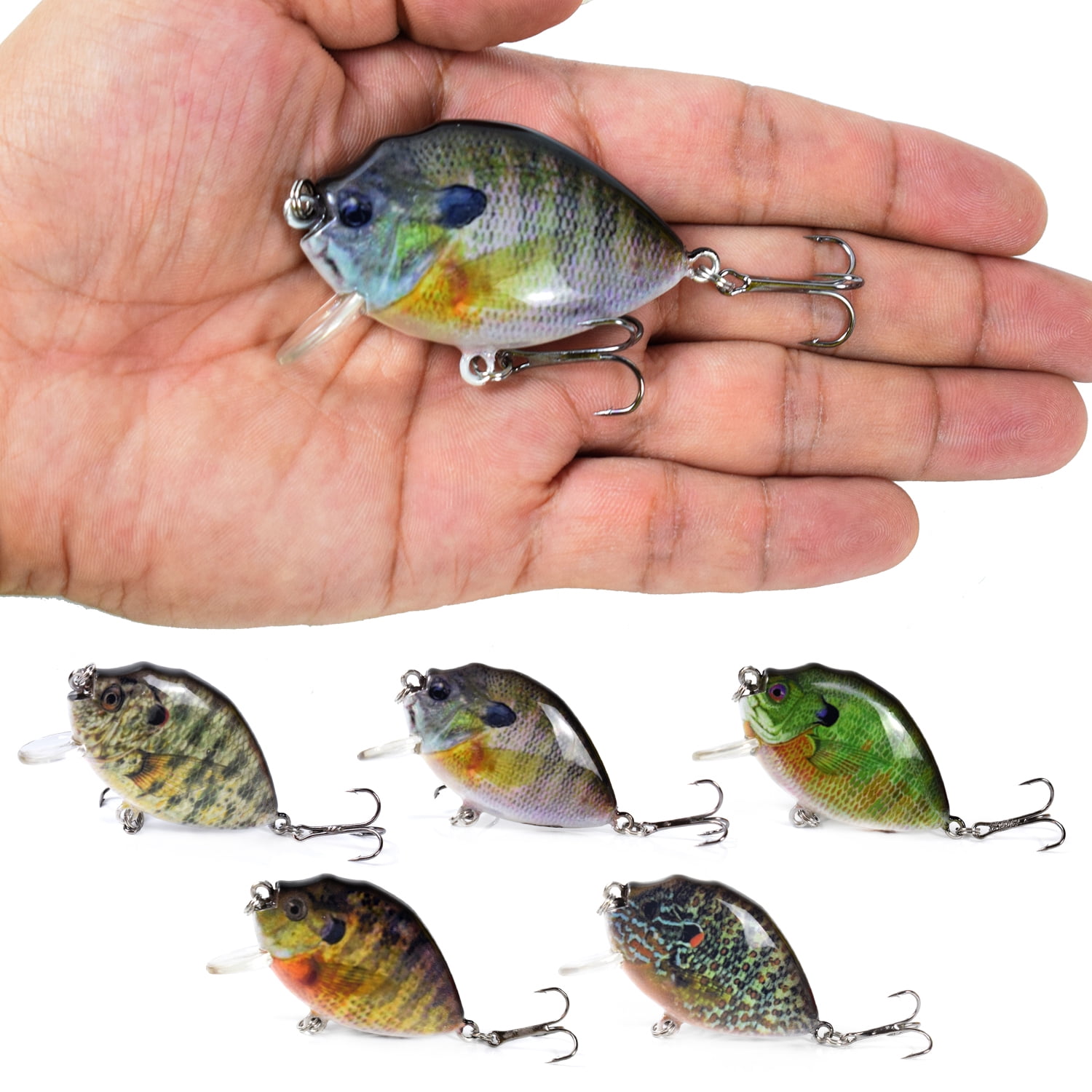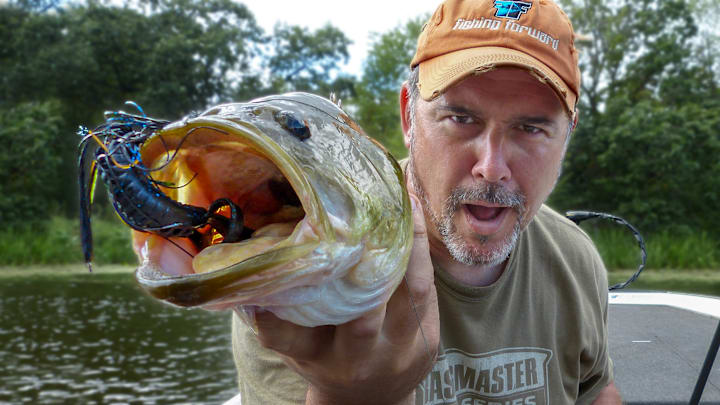6 Little-Known Bass Fishing Lures That Catch More Fish Than You’d Expect
Check out the Tricks Behind Reliable Bass Lures to Enhance Your Angling Experience
Understanding the intricacies of bass Lures can substantially affect angling success. Different Lures offer distinctive purposes, from crankbaits designed for wide protection to jigs that target certain structures. The efficiency of these Lures commonly depends upon elements such as color, motion, and seasonal patterns. By understanding these components, anglers can unlock a much more rewarding experience. The concern remains: which methods will yield the best results on the water?
Understanding Bass Habits and Habitat
Recognizing the behavior and environment of bass is important for fishermens seeking success on the water. Bass are flexible fish located in different freshwater environments, including ponds, lakes, and rivers. They often tend to favor areas with framework, such as immersed rocks, dropped trees, and water plant life, which give sanctuary and hunting premises.
Seasonal patterns dramatically affect their actions; in warmer months, bass usually inhabit superficial waters, while they retreat to much deeper areas during colder seasons. Best Bass Lures. Their feeding routines are opportunistic, with a diet regimen being composed mostly of smaller fish, pests, and crustaceans
Time of day likewise plays a duty; bass are much more active during mornings and late evenings. Weather condition conditions can influence their actions also, as overcast days might motivate shallow feeding, whereas brilliant sunlight usually drives them to look for cover. Identifying these patterns gears up fishermens with the expertise required for reliable angling strategies.
Sorts Of Bass Lures and Their Uses
A range of bass Lures are important devices for anglers aiming to attract this popular video game fish. These Lures can be categorized into a number of kinds, each serving unique objectives. Crankbaits, created to resemble the swimming activity of baitfish, are efficient for covering huge locations quickly. Spinnerbaits, featuring rotating blades, create vibrations and flashes that can entice bass hiding in cover. Jigs, with their hefty heads and weedless design, are suitable for lower fishing, enabling anglers to present lure near structures where bass typically prowl. Soft plastics, such as worms and creature baits, provide convenience and can be rigged in multiple methods to adapt to differing conditions. Topwater lures, like poppers and frogs, are best utilized throughout low-light hours when bass are proactively preying on the surface. Each sort of attraction plays a vital role in improving angling experiences and increasing the probability of successful catches.

Shade and Style: What Draws In Bass?
What aspects affect bass destination to specific lure shades and styles? The interaction of light, water clarity, and the native environment plays a vital duty. Intense shades, such as chartreuse and orange, can catch a bass's eye in dirty waters, while a lot more restrained tones like environment-friendlies and blues might succeed in clear conditions.
Style components, including shape and motion, likewise dramatically impact bass destination. Lures that resemble all-natural victim, such as baitfish or crawfish, are specifically reliable. Additionally, the presence of reasonable information, like scales or fins, improves the realistic appearance, more tempting bass.
Psychological elements, such as a bass's feeding habits and territorial reactions, must not be forgotten. In specific scenarios, strong designs can provoke a reaction from aggressive bass, while subtle variants can interest much more mindful fish. Inevitably, comprehending shade and style subtleties is essential for maximizing lure effectiveness.
Matching Lures to Water Issues
Selecting the right lure involves greater than just design and color; water conditions play a substantial role in figuring out one of the most effective alternatives. Variables such as water temperature, deepness, and quality directly affect bass actions and their feeding patterns. In clear water, natural colors and refined presentations have a tendency to be more efficient, while murky problems might require brighter, a lot more dynamic Lures that can bring in interest.
Temperature level likewise influences bass task; throughout warmer months, faster-moving Lures can evoke strikes, whereas cooler temperatures may require slower, a lot more calculated presentations. In addition, deeper waters usually require much heavier Lures that can reach the desired deepness, while superficial locations are much better fit for lighter, surface-oriented alternatives.
Methods for Effective Tempt Discussion
Mastering the methods for reliable lure discussion can substantially improve fishing success. Fishermens need to focus on the speed and rhythm of their retrieves, adjusting them to resemble the all-natural activity of prey. A constant retrieve works well for numerous appeals, yet incorporating stops briefly can set off strikes from much more careful fish. In addition, varying the depth of the lure is critical; making use of various casting angles and adjusting the reel can assist target fish at numerous depths.
Making use of a mix of skill discussions, such as twitching or dragging the attraction across the base, can also work. It is vital for anglers to review the water and adjust their strategies based upon presence and framework. Offering Lures near cover, like immersed rocks or plants, typically produces better outcomes, as bass often tend to seek shelter. Inevitably, trying out various techniques will bring about an extra satisfying angling experience.
Seasonal Factors To Consider for Entice Selection
Seasonal changes significantly affect bass habits and appeal performance. As water temperature levels rise and fall, anglers must adjust their attraction choices to straighten with pre-spawning and post-spawn click site problems. Understanding these seasonal patterns can enhance fishing success by targeting bass at their most active times.
Seasonal Water Temperature Level Results
As water temperature levels vary throughout the year, bass habits and feeding patterns change, affecting the performance of various lures. During chillier months, bass have a tendency to end up being lethargic, preferring slow-moving Lures that imitate battling prey. On the other hand, as temperature levels rise in spring, bass end up being extra energetic, making quicker, extra aggressive Lures efficient. Mid-summer sees bass looking for much deeper, cooler waters, requiring using Lures that can get to these depths. As temperatures start to drop in loss, bass typically feed greatly to prepare for winter, making functional Lures that can copy a selection of forage kinds specifically successful. Recognizing these seasonal temperature effects permits anglers to choose proper Lures that line up with bass actions, optimizing their angling success.
Pre-Spawning Lure Choices
What elements affect the selection of Lures during the pre-spawning duration for bass? Anglers have to think about water temperature, weather, and the bass's feeding behavior. As temperatures increase and days extend, bass end up being extra energetic and aggressive, prompting a shift in their feeding patterns. During this time around, draws that resemble the all-natural victim of bass-- such as shad or bluegill-- are specifically reliable. Popular choices consist of spinnerbaits, lipless crankbaits, and jigs, which can be fished at numerous depths. Additionally, fishermens should concentrate on locations with cover, such as submerged plants or rough structures, as these spots often draw in pre-spawn bass. Bass Fishing Lures. Understanding these elements can substantially boost the opportunities of a successful angling journey throughout this crucial seasonal phase
Post-Spawn Techniques Adjustments
Although post-spawn bass display different behaviors than during the pre-spawn stage, reliable lure choice continues to be crucial for anglers intending to target them efficiently. After spawning, bass typically end up being inactive and seek deeper waters, making it vital to change attraction selections accordingly. Fishermens must think about utilizing slower-moving baits, such as jigs or soft plastics, which can attract bass that are much less aggressive. Crankbaits with a refined activity can likewise work, allowing for a slower discussion that simulates the all-natural post-spawn forage. Furthermore, fishing near structure, such as immersed vegetation or rocks, can enhance possibilities of success. By recognizing these seasonal changes, fishermens can improve their angling experience and improve their catch rates during the post-spawn duration.
Regularly Asked Inquiries
How Do I Pick the Right Pole for Bass Angling?
To select the best rod for bass angling, one should think about the pole's length, power, and activity. A medium to medium-heavy rod, around 6 to 7 feet, is frequently suitable for versatility and control.

What Is the most effective Time of Day to Catch Bass?
The ideal time of day to catch bass is commonly morning and late afternoon. Throughout these periods, bass are a lot more active, feeding near the surface, making them less complicated targets for fishermens using effective lures.
Just How Do Climate Conditions Influence Bass Angling Success?
Climate condition significantly influence bass fishing success. Warmer temperature levels and overcast skies typically urge bass task, while cold fronts can cause sleepiness. Rain can likewise improve feeding habits, making it necessary for anglers to adjust their methods accordingly.
Can I Use Lures for Other Fish Species?
Yes, lures created for bass can likewise be reliable for other fish types. Selecting the appropriate size, color, and activity according to the target species and their feeding practices remains critical for success.
What Are Common Blunders When Making Use Of Bass Lures?
Common mistakes when using bass Lures include selecting unsuitable dimensions or shades, getting too promptly, falling short to adapt to you can try this out weather conditions, and not taking into consideration water deepness. These errors can substantially lower the chances of an effective catch.
As water temperatures vary throughout the year, bass habits and feeding patterns alter, affecting the effectiveness of numerous lures. Mid-summer sees bass seeking much deeper, cooler waters, demanding the usage of Lures that can get to why not check here these depths. Post-spawn bass exhibit different behaviors than during the pre-spawn stage, reliable attraction option continues to be essential for fishermens intending to target them successfully. After spawning, bass often come to be tired and look for much deeper waters, making it crucial to adjust appeal selections appropriately. Typical blunders when using bass Lures include picking improper dimensions or colors, retrieving as well swiftly, stopping working to adapt to weather problems, and not thinking about water depth.